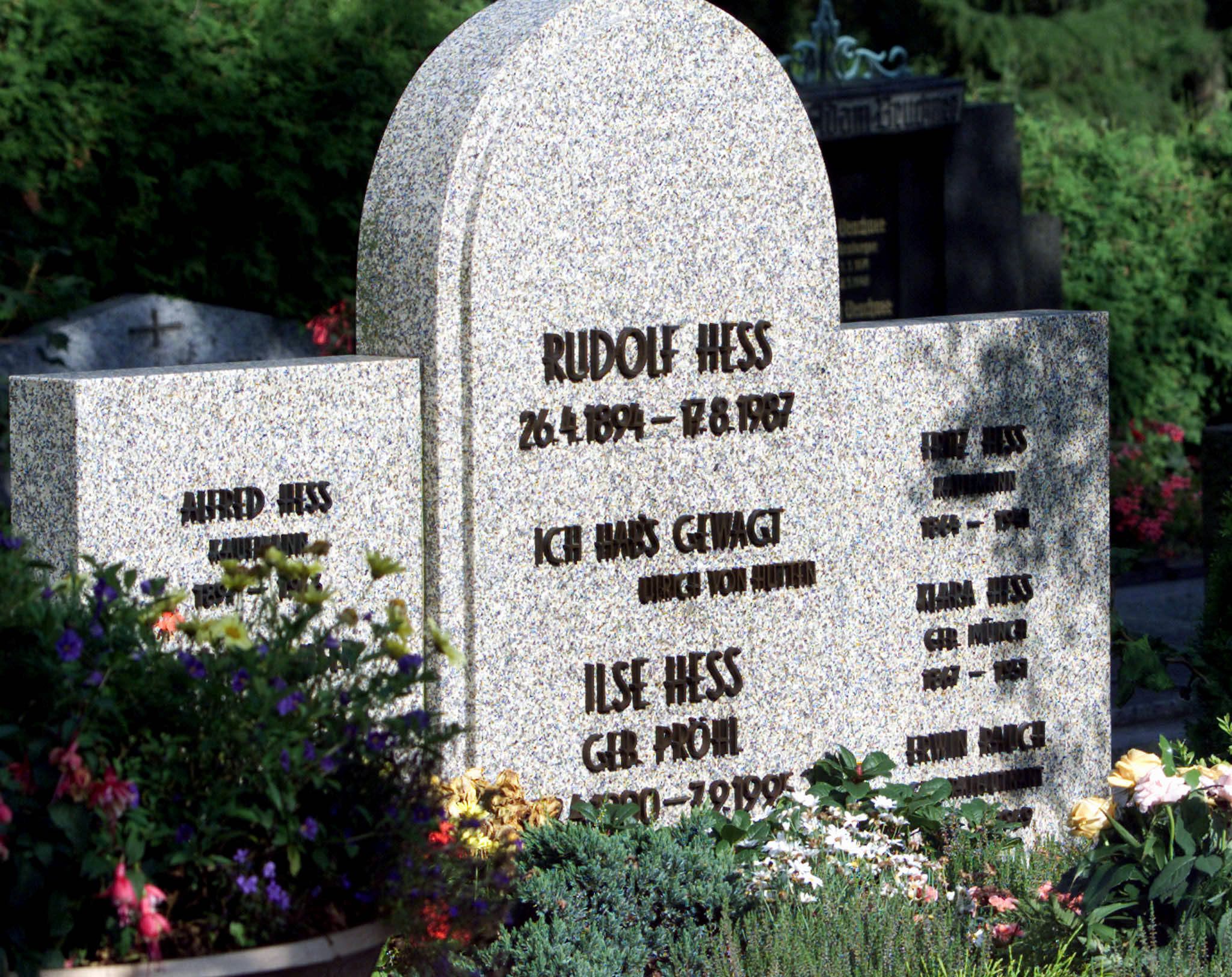
Newsweek published this story under the headline of "A Last Relic of the Reich" on August 31, 1987. A group of neo-Nazis planned a public demonstration to commemorate the death of Rudolf Hess, Hitler's right-hand man and deputy chief of the Nazi party until he was captured by the British in 1941. In light of this news, Newsweek is republishing the story.
And so the ghost of Spandau was laid to rest at last. Rudolf Hess, the last survivor of Hitler's inner circle, took his own life at 93, frail, nearly blind and totally alone in a world that for him stopped in 1941. He had long since become not so much a man as a relic of war—even of the Cold War, for his continued incarceration in Berlin, as the sole inmate of Spandau Prison, was a source of enduring dispute between the Soviet Union and the West.
In death as in life, Hess appears to have taken matters into his own hands. Left briefly unattended in an outdoor cottage on the Spandau grounds, he wrapped an electrical cord around his neck and somehow managed to strangle himself. Even though he left behind a suicide note and had made at least two previous attempts at self-extinction, the Allied powers that govern Spandau—the United States, Britain, France and the Soviet Union—had a difficult time convincing skeptics that he was responsible for his own death. "I cannot imagine that," said his son, Wolf-Rudiger Hess. "He held out so long, and now this."
The Allies did not help their own cause by at first withholding the evidence of suicide. They were handcuffed by Spandau's baroque rules, which require all four Allied powers to approve every decision; the Soviet representatives insisted on time-consuming consultations with Moscow.
Hess knew about jails. He served in prison with Hitler after the failed "beer-hall putsch" in Munich in 1923; behind bars, they worked together on the text of Mein Kampf. His rise to the post of chief deputy to the Fuhrer was based, as British historian Alan Bullock put it, on "his doglike devotion to Hitler," not on any particular talents or intelligence. But he seems to have had a streak of quirky independence —or madness. On the night of May 10, 1941, Hess climbed into a Messerschmitt-110 fighter plane and flew alone to Scotland, where he bailed out over farmland not far from Glasgow. When he was captured he demanded to be taken to the Duke of Hamilton; he thought the young nobleman had personal access to King George VI. Hess told the duke he was on a mission of peace: he wanted to arrange a settlement between Britain and Germany. Instead, he was thrown into prison until the war was over. At the Nuremberg war-crimes trials he was sentenced to life imprisonment for "crimes against peace."
Did Hess act with Hitler's approval? Only the two principals knew, but most Western historians believe not. Soviet officials have long suspected that Hess meant to inform the British of Operation Barbarossa, the invasion of Russia that took place six weeks later, in a bid to work out a separate peace—and thus relieve Western pressure on the Wehrmacht.
Those suspicions probably account for Moscow's insistence that Hess be shown no mercy. Hess was originally one of seven top Nazis locked up in Spandau, but the others had either died or been released by 1966. As early as 1950 Churchill expressed unease about Hess's treatment. "He was a medical and not a criminal case, and should be so regarded," he wrote. About 100 men were required to maintain and guard Spandau for Hess's sole benefit (the duty rotated among the four occupying powers), and the British, French and Americans all urged that he be released—partly on humanitarian grounds, partly to prevent his elevation to martyr status. But Soviet officials consistently vetoed the idea, dismissing it as an attempt to grant "an amnesty to fascism."
Hess is hardly a martyr, but his death provoked some signs of sympathy on the German far right. As his body was flown to Bavaria for burial in the family grave in Wunsiedel, town officials were nervously preparing for attempts by right-wingers to turn his resting place into a shrine. Outside Spandau small groups of neo-Nazis chanted, "We are proud to be Germans" and "Foreigners out." Throughout his lonely life in prison, Hess had never repudiated his early beliefs. "I once served under the greatest man who was ever born under the sun," he told his biographer, former Army Lieutenant Colonel Eugene Bird, who served as U.S. commandant of Spandau from 1964 to 1972. But most West Germans appeared eager to close the book on Hess—and the wartime Allies are helping. Within days of his death workers began removing furniture and documents from Spandau. The prison will be razed as soon as possible and replaced with that symbol of a modern world that Rudolf Hess never knew: a shopping center.
Uncommon Knowledge
Newsweek is committed to challenging conventional wisdom and finding connections in the search for common ground.
Newsweek is committed to challenging conventional wisdom and finding connections in the search for common ground.
About the writer
To read how Newsweek uses AI as a newsroom tool, Click here.








